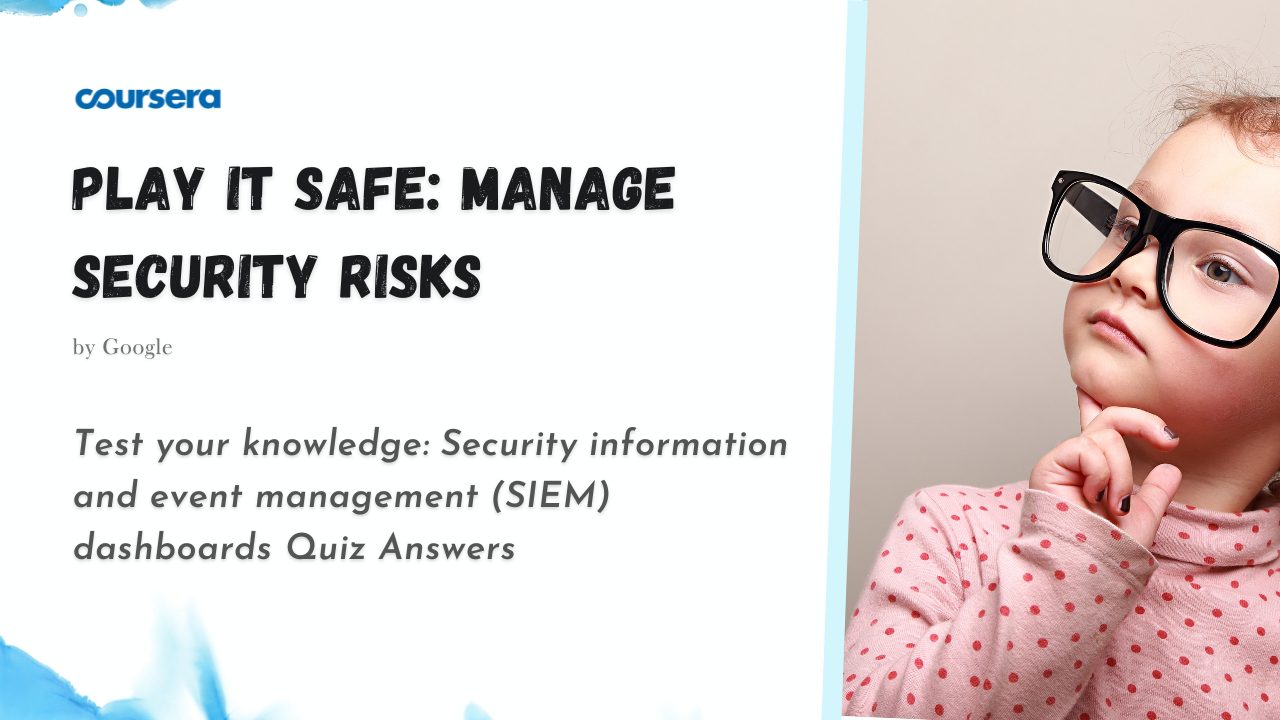Test your knowledge: Security information and event management (SIEM) dashboards Quiz Answers
In this article i am gone to share Coursera Course: Play It Safe: Manage Security Risks Week 3 Practice Quiz | Test your knowledge: Security information and event management (SIEM) dashboards Quiz Answers with you..
Also visit: Test your knowledge: OWASP principles and security audits Quiz Answers
Test your knowledge: Security information and event management (SIEM) dashboards Quiz Answers
Question 1)
Which log source records events related to websites, emails, and file shares, as well as password and username requests?
- Firewall
- Server
- Network
- Receiving
Server logs record events related to websites, emails, and file shares. They include actions such as login requests, password and username requests, as well as the ongoing use of these services.
Question 2)
Fill in the blank: A security information and _____ management (SIEM) tool is an application that collects and analyzes log data to monitor critical activities in an organization.
- event
- employee
- efficiency
- emergency
A security information and event management (SIEM) tool is an application that collects and analyzes log data to monitor critical activities in an organization. SIEM tools index and minimize the scope of logs a security professional should manually review and analyze.
Question 3)
A security professional evaluates a software application by reviewing key technical attributes including response time, availability, and failure rate. What are they using to assess performance?
- Cloud tools
- Index standards
- Models
- Metrics
They are using metrics. Metrics are key technical attributes including response time, availability, and failure rate, which are used to assess the performance of a software application. SIEM dashboards can be customized to display relevant metrics.
Question 4)
Fill in the blank: SIEM tools must be configured and _____ to meet each organization’s unique security needs.
- customized
- centralized
- reviewed
- indexed
SIEM tools must be configured and customized to meet each organization’s unique security needs.

